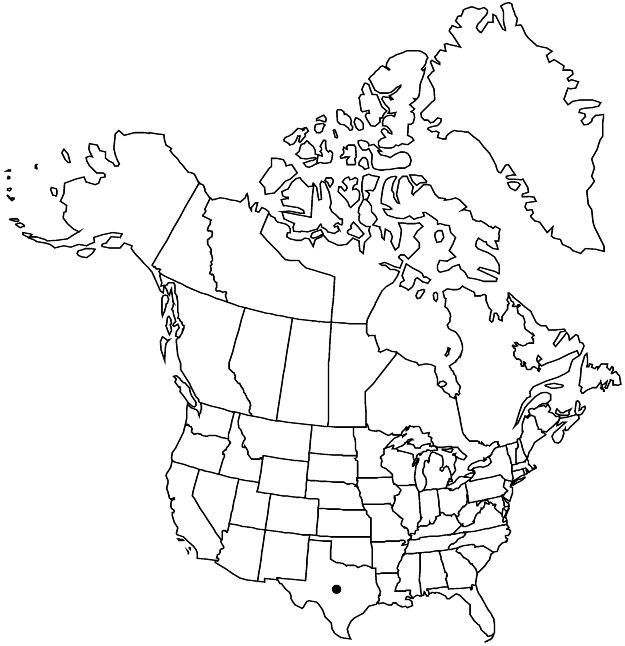Fendlera linearis
J. Arnold Arbor. 1: 205. 1920.
Stems 5–30 dm. Branches ± thorn-tipped; twigs densely strigose and with minute, branched trichomes. Leaves: blade linear, 7–25(–35) × 1.3–2 mm, coriaceous, base cuneate, margins strongly revolute, touching midvein, apex acute, mucronulate, abaxial surface hidden, adaxial surface usually sparsely sericeous, sometimes glabrate, trichomes appressed, to 0.4 mm; midvein 0.5–1 mm wide, flat. Pedicels 2–6 mm, strigose and with minute, branched trichomes. Flowers: hypanthium and calyx tube 1.5–3.5 mm; sepals becoming reflexed, triangular, 3–6 × 1.5–3 mm, sparsely sericeous and with minute, branched trichomes abaxially; petals white, 5–11 × 4–7 mm, claw 3–4.5 mm, blade ovate, round-obovate, or deltate-ovate, margins ± erose; filaments 3.5–8 × 2–2.5 mm; anthers 2–4 mm; styles 1–1.2 mm. Capsules ovoid, 9–13 × 5–6 mm. Seeds 3–5 mm.
Phenology: Flowering May–Oct.
Habitat: Limestone walls, slopes, rocky woodlands, chaparral, gypsum hills.
Elevation: 1100–1900 m.
Distribution

Tex., Mexico (Chihuahua, Coahuila, Nuevo León, Tamaulipas).
Discussion
Fendlera linearis is well marked, although variable in habit and in flower and fruit sizes. In Texas, it is known only from Brewster and Presidio counties. It reportedly is browsed heavily by deer and other animals.
Selected References
None.